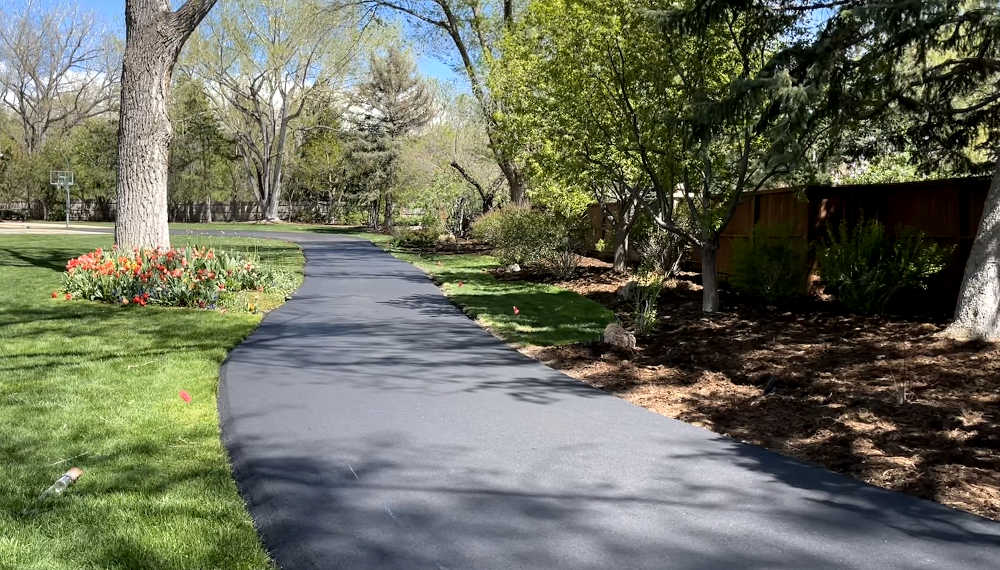
An asphalt overlay is a cost-effective and efficient solution for rejuvenating worn-out asphalt driveways, which should be completed by a licensed paving contractor. This process involves applying a new layer of asphalt over an existing pavement to restore its smoothness, improve its appearance, and extend its lifespan. Asphalt overlays are commonly used for driveways, parking lots, and roadways that exhibit signs of wear and tear but do not have significant structural damage. Homeowners can add years of additional service to their driveway by opting for an asphalt overlay.
Asphalt overlays can be an excellent option for revitalizing pavement under certain conditions. Here are some scenarios where an asphalt overlay is the right choice:
When the pavement has small cracks that are not extensive.
For pavements with minor potholes, an asphalt overlay can fill and level these imperfections, creating a seamless and even surface. Addressing potholes early before they expand and cause more significant issues is essential.
An overlay can restore its original appearance and functionality if the asphalt surface shows signs of wear, such as fading, slight roughness, or surface erosion.
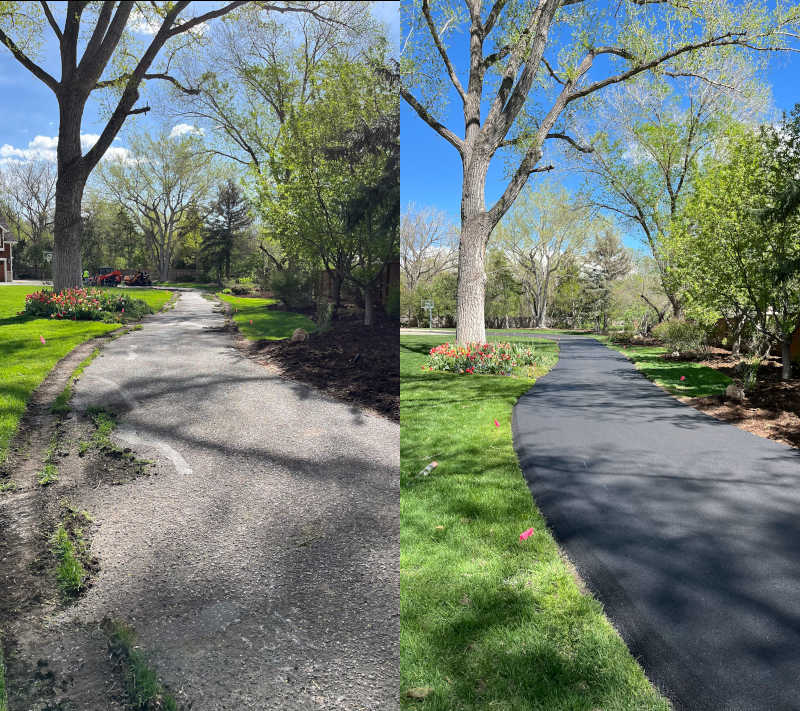
While asphalt overlays can be a highly effective solution, they may not be appropriate in some situations. Here are some conditions under which an asphalt overlay is not recommended:
If there are underlying problems with the base layer of the pavement, such as instability or poor drainage, an asphalt overlay will not address these fundamental issues. In such cases, the base must be repaired or replaced to ensure a stable foundation before applying a new asphalt layer.
An overlay is not sufficient when the pavement exhibits extensive cracking, especially alligator cracking (a series of interconnected cracks resembling an alligator’s skin). These cracks indicate deeper structural problems that require more extensive repairs or a full-depth reclamation.
An overlay might not be the best solution if the pavement has numerous or large potholes. Extensive potholing suggests significant deterioration; simply covering them may not provide a lasting fix. A more comprehensive repair approach is needed to ensure the pavement’s longevity.
Asphalt overlays will not fix issues with the existing grading, such as poor slope or inadequate drainage. Proper grading is crucial to ensure water runoff and prevent pooling, which can damage the pavement over time.
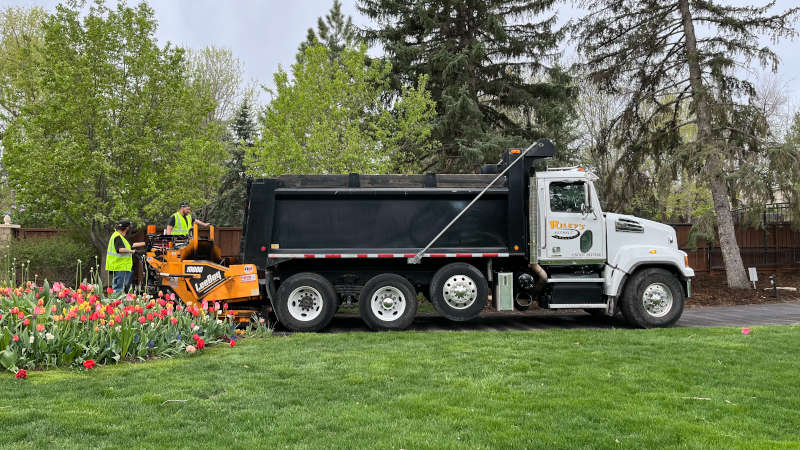
Choosing an asphalt overlay offers several significant benefits, making it a preferred option for many property owners. Here are some of the key advantages:
An asphalt overlay is generally more cost-effective than a full-depth reclamation, which involves removing and replacing the entire pavement structure. The overlay requires less labor and preparation, translating to lower costs for materials and installation.
An asphalt overlay’s installation process is faster than a complete pavement reconstruction. Since it involves adding a new layer over the existing surface, the project can be completed in a shorter time frame. This minimizes disruptions to traffic and daily activities, making it a convenient option for busy areas.
An asphalt overlay can significantly enhance the appearance of a worn or damaged pavement. The fresh layer of asphalt provides a smooth, uniform surface that looks new and well-maintained. An overlay can boost the curb appeal of residential driveways.
In this 60 second video we show an asphalt overlay of a driveway. This was small project completed in one day.
In this section, we will walk you through the detailed steps involved in an asphalt overlay project, using a recent driveway paving project in Cherry Hills Village as an example. Each step is crucial to ensure a smooth and long-lasting surface. The photos accompanying this guide will illustrate each process stage, providing a clear visual understanding of how an asphalt overlay is done.
The first step in the asphalt overlay process is edging the driveway, which involves trimming the edges of the existing pavement to create a clean boundary. By removing any encroaching grass, dirt, or debris, edging enhances the appearance and sets the foundation for a professional and durable finish.
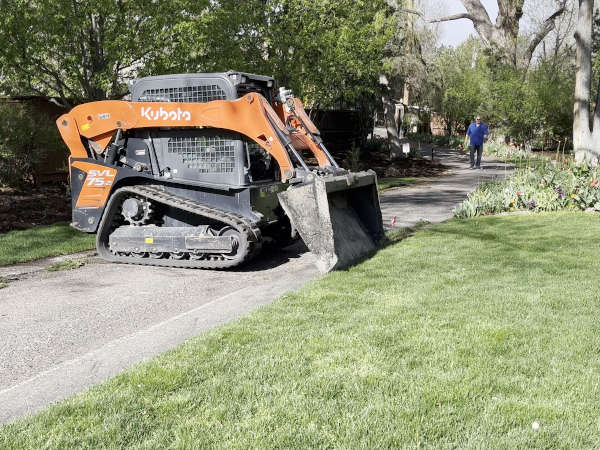
The next step in the process is filling any potholes present in the existing driveway. This involves cleaning out the potholes to remove debris, loose asphalt, and dirt. Once cleaned, the potholes are filled and compacted to be level with the surrounding pavement. Correctly filling and compacting the potholes provides a stable and even base for the new asphalt layer.
Preparing the surface transitions involves addressing areas where the asphalt meets other materials, such as a concrete apron, garage, or street. In these spots, about two feet of the existing asphalt is removed to ensure a smooth transition between surfaces and to avoid a thin layer of new asphalt. This step ensures that the new asphalt layer has a proper thickness.

Cleaning the existing driveway is vital before applying the new asphalt overlay. This process involves blowing off dirt, debris, and leaves from the surface, ensuring it is free from any loose particles that could affect the bonding of the new asphalt. Additionally, any chemical stains, such as diesel fuel, are spot-treated to remove contaminants that might interfere with the adhesion.
Applying a tack coating involves spreading a bituminous product over the existing asphalt layer. This coating acts as a bonding agent, helping the new asphalt layer adhere to the old one. Similar to applying a primer before painting, the tack coat ensures a strong bond between the layers, enhancing the durability and longevity of the overlay.
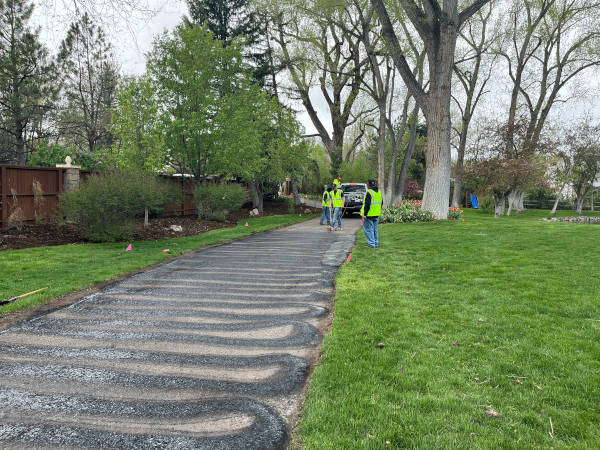
In this step, 2”-3” of hot asphalt is laid over the existing driveway. The new layer is spread evenly to ensure a consistent thickness across the surface. The new asphalt provides a fresh, smooth layer covering any old pavement imperfections.
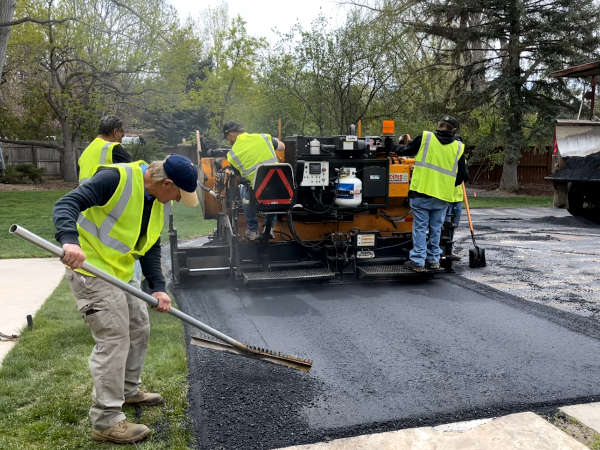
After the new asphalt is laid, the driveway’s edges are carefully formed and compacted. Edging involves shaping the edges to create a clean and defined boundary. Proper compaction of the edges helps contribute to a durable finish that enhances the overall look and longevity of the driveway.
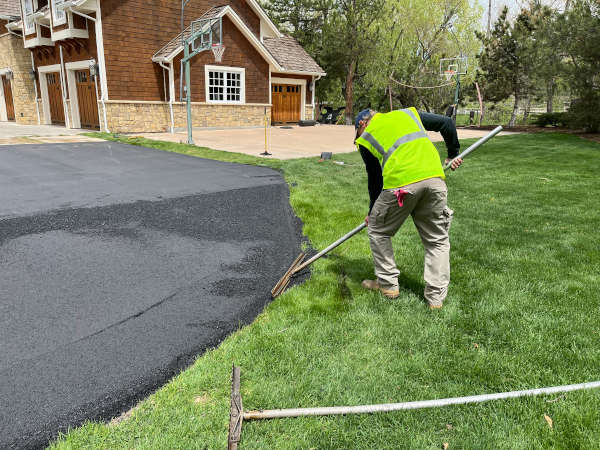
The final step in the process is compaction. Multiple passes with a roller to firmly compact the new asphalt. Proper compaction ensures that the asphalt is evenly distributed and tightly packed, which enhances its strength and durability.

An asphalt overlay offers a practical and economical way to renew and extend the life of driveways. The overlay process involves a series of carefully executed steps, such as edging, filling potholes, cleaning the surface, applying a tack coat, laying new asphalt, and compaction. Our recent driveway paving project in Cherry Hills Village exemplifies these steps and the quality results they produce. You can achieve a refreshed, durable, and visually appealing driveway by choosing an asphalt overlay. If you’re considering this service for your property, contact us for a free estimate and let our team provide you with a professional and long-lasting solution.

Please complete the form below for a free no-obligation estimate.